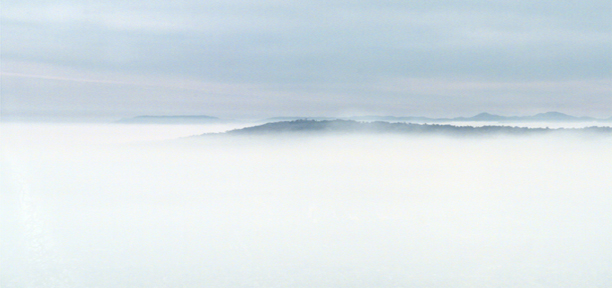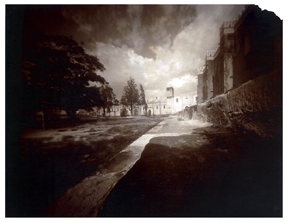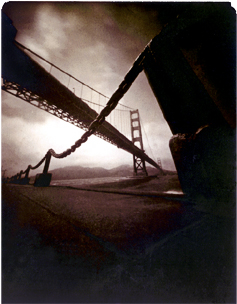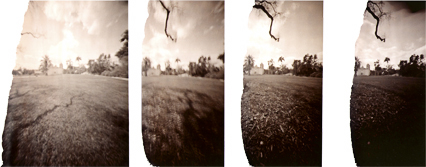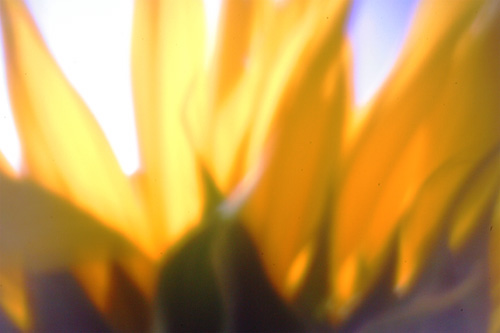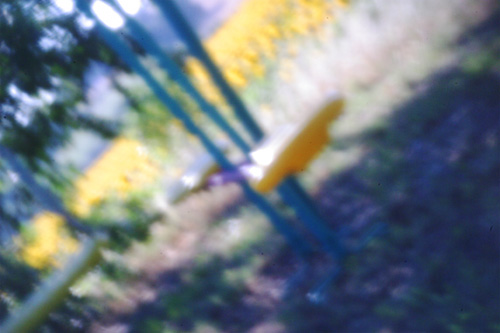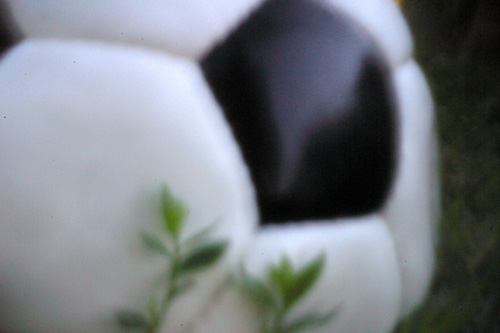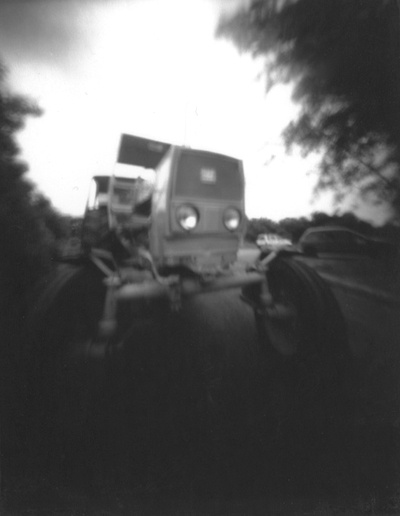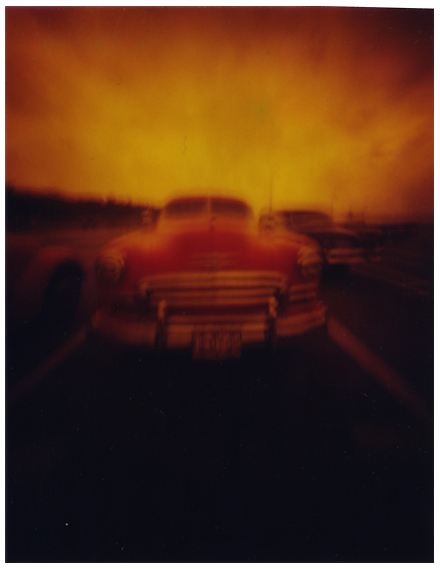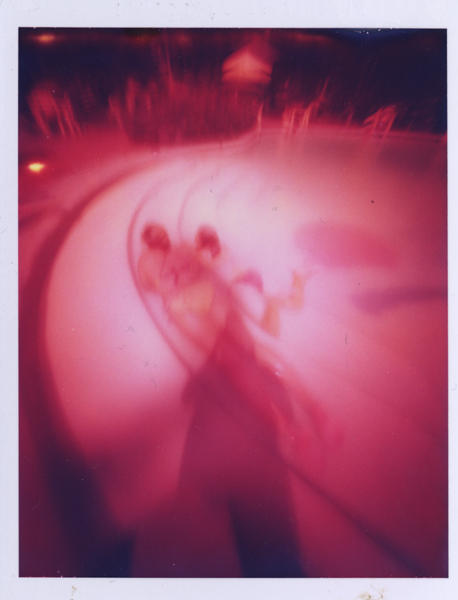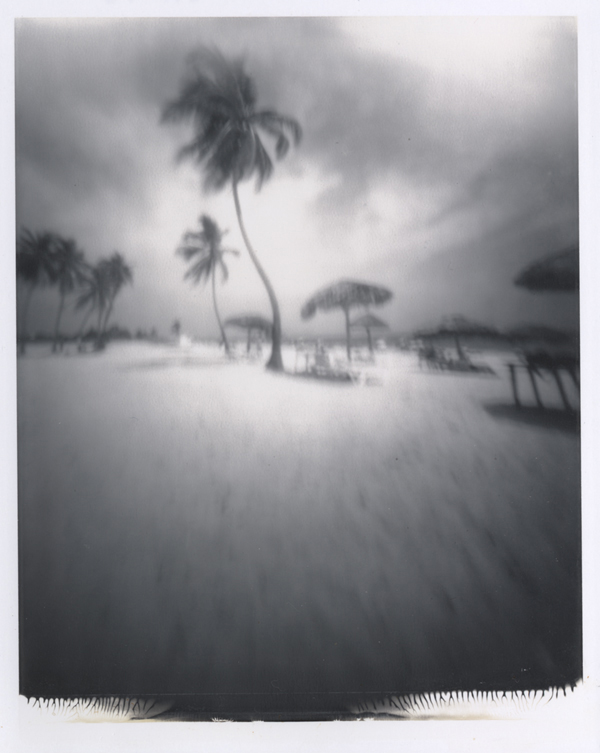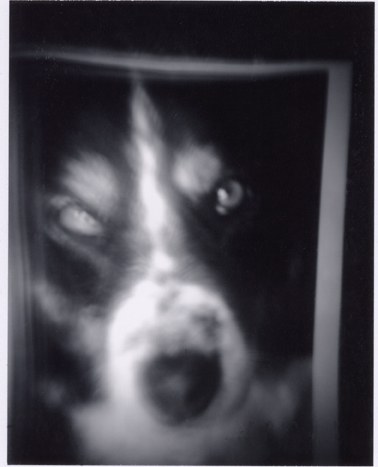|
tips 1. My favorite pinhole camera is the Leonardo 4x5 Pinhole Camera (available at Calumet for around $100). 2. Use polaroid 4x5 film to have 'instant' results. 3. I use a 25 Red filter behind the pinhole to slow exposures down to the 5-20 second range. 4. Be sure to buy the "super wide" model, it's more portable and delivers the most exaggerated effects. |
|
|
digital pinhole |
|
| History
of Pinhole Photography |
|||
|
•
Here's a site for a local manufacturer of pinhole cameras: http://www.pinholecamera.com/.
This shop is on 30 East Mason St., in Santa Barbara, however the
owner is not frequently there
so phone ahead; (805) 966-1181. • I use a Leonardo 4x5 Pinhole Camera (there 'Super Wide' model) manufactured in Lorenzo, New Mexico and sold through Calumet Photographic Supplies ( you may have to type in the camera's name to search for it). • The simpliest constructions can be created by elementary school children with cardboard oatmeal cereal containers (Quacker Oats is a favorite) and a hole punched through the cap at one end with a sewing needle. How large should the hole be? The rule of thumb states that if your camera has a focal length of 6" (distance from the center of the 'lens' or opening to the film plane) then your pinhole should be .5mm in diameter. Here's a link that supports a chart that lists needle size formulas: http://www.pinhole.org/make/exposure.cfm. Basic Characteristics of Pinhole Photography • Basic characteristics include darkened frame edges, extreme depth of field (due to the extremely small aperture or opening) and has an antique quality that disguises the era. Much of pinhole photography has been done in B&W. In the beginning it was only B&W, but in it's contemporary form color has become just as popular. The disadvantage of working with pinhole cameras has always been that you can never be sure what the captured image looks like until the film is processed (unless you work with polaroid instant film). With digital cameras, those days are over.
• Try these additional sites for more pinhole information: http://www.skypoint.com/members/escargo/ppp.html - a pinhole pointer page http://users.rcn.com/stewoody/
• I even turned my 1970 Volkswagen camper into a mobile camera obscura by constructing dark panels for all the windows. The front windshield panel had a small hole covered with black tape created by a regular nail. I could drive my "camera obscura" to my subject, tape 16x20 photographic paper on the back window panel and take a nap for 2-4 hours while the paper was being exposed to light and then place the paper back into its light-tight box and bring back to my darkroom for processing. Today I prefer the digital version. Tip: Don't be fooled by purchasing the "lens cap" pinhole solutions (a hole drilled into a simple lens cap for which they charge too much), they just don't cut it. In fact, all they really produce is an incredibly small circular image which does not in any way simulate the characteristics of pinhole photography. Digital Pinhole
• The trick is to drill the 'pinhole' in the body cap, not the lens cap! I used a simple brad nail tapped through the plastic body cap of the camera. Try to center this hole to the best of your ability. Don't forget to carefully file down any rough edges. My Digital Canon D60 was very successful at determining exposure automatically once I set the meter to overexpose by one stop.
• The LCD monitor of your digital camera will give you a preview, but be sure to check the histogram to make sure you have provided enough light for a healthy exposure. Make exposure adjustments based on the histogram.
Variations Combining Traditional and Digital Pinhole • An artist friend of mine, Arlene Hayes, travelled with a group of students and myself to Cuba this summer studying photography. Arlene is an accomplished contemporary painter and sculptor so I knew she would enjoy being introduced to pinhole photography. She worked in both digital pinhole and traditional pinhole; in fact, it was hard to get MY pinhole camera (a Leonardo 4x5) out of her hands. But her results proved that it was in the right hands after all.
• She bought her own Leonardo 4x5 after she returned home and continued to push the PINHOLE ENVELOPE.
How
do you think Arlene did this one ???
[ back to top ] LOWELL © 2003 |
|||
